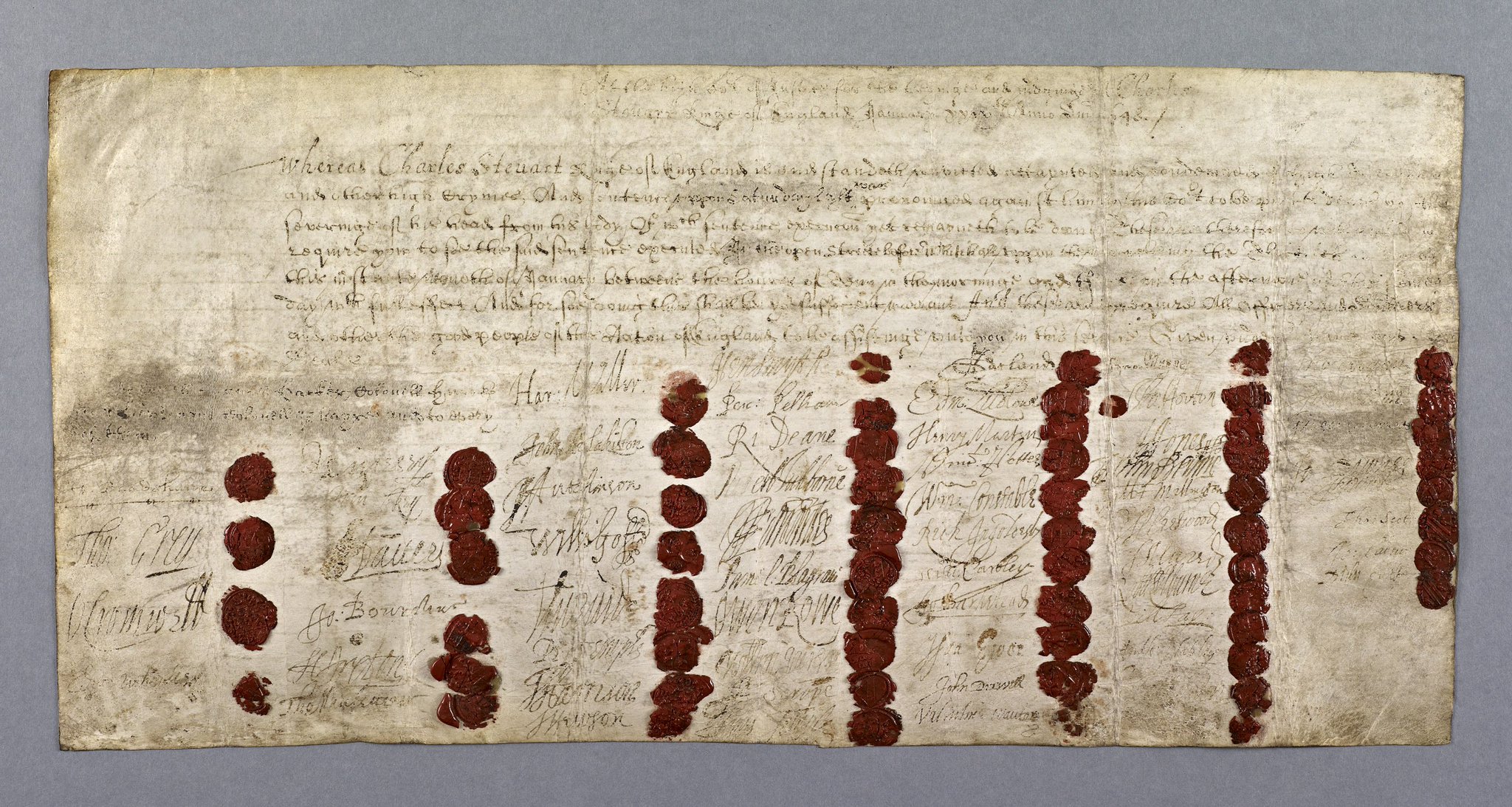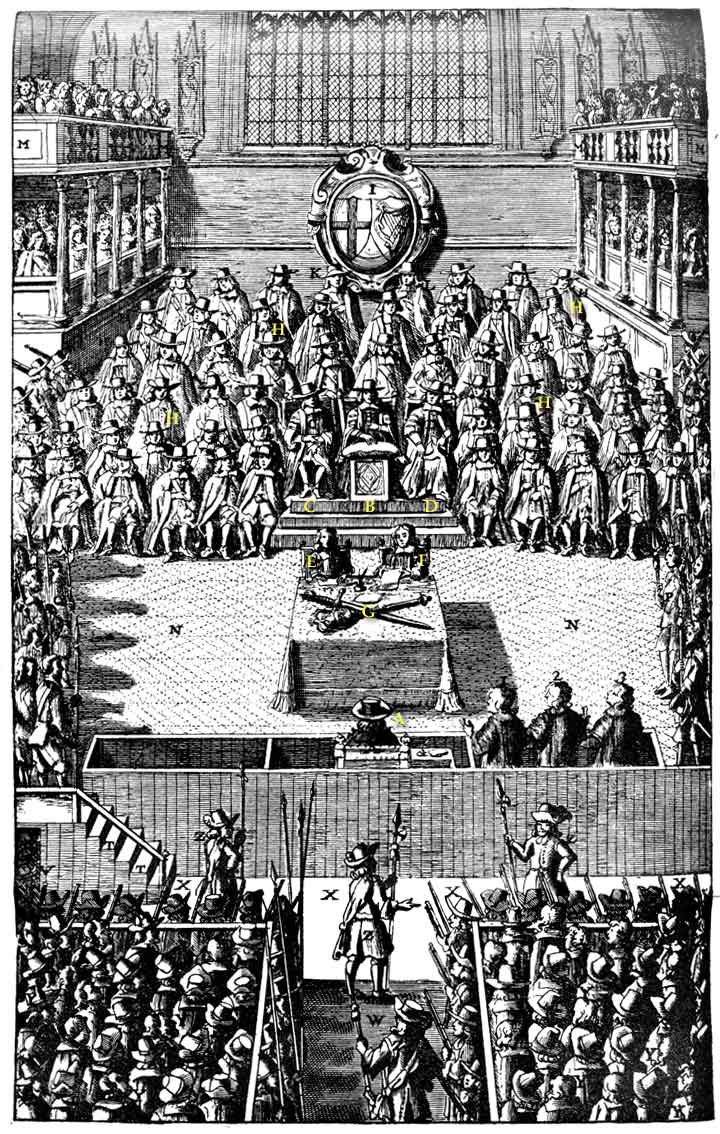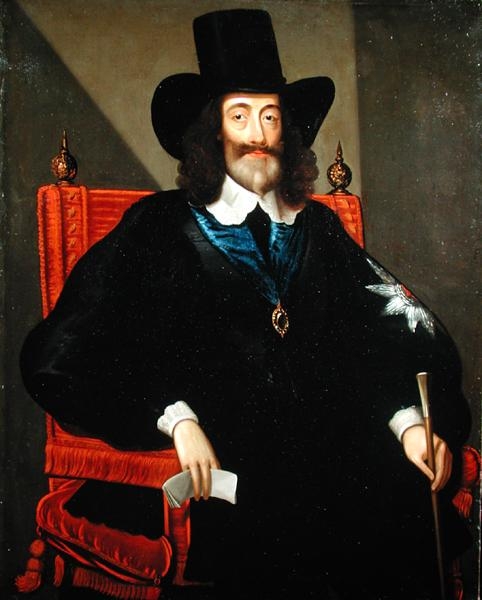|
Declaration Of Lex Talionis
Early in the First English Civil War the Long Parliament threatened to retaliate in kind if the Royalists tried and executed John Lilburne and two other Parliamentary offices for treason. Lilburne later described this as the declaration of Lex Talionis, and it brought about a practical—rather than moral—mutual restraint by the parties to the war on how they treated prisoners of war.Barbara Donagan (2008), ''War in England 1642-1649'', Oxford University Press, ,p. 131/ref> History Early in the English Civil War, John Lilburne, a prominent supporter of the Parliamentary cause who because of his radical views was known as "Free Born John", was captured by the Royalists during the Battle of Brentford while serving as a captain in the Parliamentary army. Moves were taken to try him and two other prisoners of war (Clifton Catesby and Robert Vivers), in the civil court of the Kings Bench as traitors. Elizabeth, Lilburne's wife, appealed to Parliament and on 17 December 1642 Parli ... [...More Info...] [...Related Items...] OR: [Wikipedia] [Google] [Baidu] |
First English Civil War
The First English Civil War took place in England and Wales from 1642 to 1646, and forms part of the 1639 to 1653 Wars of the Three Kingdoms. They include the Bishops' Wars, the Irish Confederate Wars, the Second English Civil War, the Anglo-Scottish war (1650–1652) and the 1649 to 1653 Cromwellian conquest of Ireland. Historians estimate that between 15% to 20% of all adult males in England and Wales served in the military between 1639 to 1653, while around 4% of the total population died from war-related causes. This compares to a figure of 2.23% for World War I, which illustrates the impact of the conflict on society in general and the bitterness it engendered. Conflict over the role of Parliament and religious practice dated from the accession of James VI and I in 1603. These tensions culminated in the imposition of Personal Rule in 1629 by his son, Charles I, who finally recalled Parliament in April and November 1640. He did so hoping to obtain funding that would en ... [...More Info...] [...Related Items...] OR: [Wikipedia] [Google] [Baidu] |
Rice Powell
Rice Powell was a Welsh Colonel in the Parliamentary army during the First English Civil War. In the Second English Civil War he allied himself with the Royalist cause. He fought in South Wales and played a significant part in events between 1642 and 1649 including a senior role during the Battle of St. Fagans. Background His background is uncertain but he is probably the son of a Lewis Powell and is from South Pembrokeshire, first coming to notice for his service in Ireland prior to the start of what was to become the First English Civil War, playing a part in quelling an insurrection in Ireland which was presumably his first taste of military life. English Civil War In 1642 and the start of the war he returned to Pembrokeshire, apparently still owed arrears of pay for his Irish service and joined with John Poyer and Rowland Laugharne in the defence of Pembroke Castle and offensive actions throughout Pembrokeshire. He was appointed governor of Cardigan Castle by Laugharne ... [...More Info...] [...Related Items...] OR: [Wikipedia] [Google] [Baidu] |
English Historical Review
''The English Historical Review'' is a bimonthly peer-reviewed academic journal that was established in 1886 and published by Oxford University Press (formerly Longman). It publishes articles on all aspects of history – British, European, and world history – since the classical era. It is the oldest surviving English language academic journal in the discipline of history. Six issues are published each year, and typically include four articles from a broad chronological range (roughly, medieval, early modern, modern and twentieth century) and around sixty book reviews. Review Articles are commissioned by the editors. A summary of international periodical literature published in the previous twelve months is also provided, and an annual summary of editions, reference works and other materials of interest to scholars is also produced. The journal was established in 1886 by John Dalberg-Acton, 1st Baron Acton, Regius professor of modern history at Cambridge, and a fellow of All ... [...More Info...] [...Related Items...] OR: [Wikipedia] [Google] [Baidu] |
High Treason
Treason is the crime of attacking a state authority to which one owes allegiance. This typically includes acts such as participating in a war against one's native country, attempting to overthrow its government, spying on its military, its diplomats, or its secret services for a hostile and foreign power, or attempting to kill its head of state. A person who commits treason is known in law as a traitor. Historically, in common law countries, treason also covered the murder of specific social superiors, such as the murder of a husband by his wife or that of a master by his servant. Treason (i.e. disloyalty) against one's monarch was known as ''high treason'' and treason against a lesser superior was ''petty treason''. As jurisdictions around the world abolished petty treason, "treason" came to refer to what was historically known as high treason. At times, the term ''traitor'' has been used as a political epithet, regardless of any verifiable treasonable action. In a civil war or ... [...More Info...] [...Related Items...] OR: [Wikipedia] [Google] [Baidu] |
Charles Stuart, That Man Of Blood
Charles Stuart, that man of blood was a phrase used by Independents, during the English Civil War to describe King Charles I. The phrase is derived from the Bible: This and another verse were used to justify regicide: Windsor Castle prayer meeting Although the phrase had been used for a number of years by Independents, it became politically significant in April 1648 during the three-day prayer meeting at Windsor Castle by the leadership of the New Model Army. The Army leadership felt deeply betrayed by the King because they thought that while they had been negotiating in good faith he had duplicitously gone behind their backs in making The Engagement with the Scots and encouraging a new civil war. At the end of the meeting the Grandees of the Army accepted that it was their duty "to call Charles Stuart, that man of blood, to an account for that blood he had shed, and mischief he had done".''The Church of England quarterly review'' Volume 21, 184p.367/ref> See also *High ... [...More Info...] [...Related Items...] OR: [Wikipedia] [Google] [Baidu] |
List Of Regicides Of Charles I
Following the trial of Charles I in January 1649, 59 commissioners (judges) signed his death warrant. They, along with several key associates and numerous court officials, were the subject of punishment following the restoration of the monarchy in 1660 with the coronation of Charles II. Charles I's trial and execution had followed the second English Civil War in which his supporters, Royalist "Cavaliers", were opposed by the Parliamentarian "Roundheads", led by Oliver Cromwell. With the return of Charles II, Parliament passed the Indemnity and Oblivion Act (1660), which granted amnesty to those guilty of most crimes committed during the Civil War and the Interregnum. Of those who had been involved in the trial and execution, 104 were specifically excluded from reprieve, although 24 had already died, including Cromwell, John Bradshaw (the judge who was president of the court), and Henry Ireton (a general in the Parliamentary army and Cromwell's son-in-law). They were giv ... [...More Info...] [...Related Items...] OR: [Wikipedia] [Google] [Baidu] |
King Charles I Of England
Charles I (19 November 1600 – 30 January 1649) was King of England, Scotland, and Ireland from 27 March 1625 until his execution in 1649. He was born into the House of Stuart as the second son of King James VI of Scotland, but after his father inherited the English throne in 1603, he moved to England, where he spent much of the rest of his life. He became heir apparent to the kingdoms of England, Scotland, and Ireland in 1612 upon the death of his elder brother, Henry Frederick, Prince of Wales. An unsuccessful and unpopular attempt to marry him to the Spanish Habsburg princess Maria Anna culminated in an eight-month visit to Spain in 1623 that demonstrated the futility of the marriage negotiation. Two years later, he married the Bourbon princess Henrietta Maria of France. After his 1625 succession, Charles quarrelled with the English Parliament, which sought to curb his royal prerogative. He believed in the divine right of kings, and was determined to govern according ... [...More Info...] [...Related Items...] OR: [Wikipedia] [Google] [Baidu] |
High Court Of Justice For The Trial Of Charles I
The High Court of Justice was the court established by the Rump Parliament to try Charles I, King of England, Scotland and Ireland. Even though this was an ''ad hoc'' tribunal that was specifically created for the purpose of trying the king, its name was eventually used by the government as a designation for subsequent courts. Background The English Civil War had been raging for nearly an entire decade. After the First English Civil War, the parliamentarians accepted the premise that the King, although wrong, had been able to justify his fight, and that he would still be entitled to limited powers as King under a new constitutional settlement. By provoking the Second English Civil War even while defeated and in captivity, Charles was held responsible for unjustifiable bloodshed. The secret "Engagement" treaty with the Scots was considered particularly unpardonable; "a more prodigious treason", said Oliver Cromwell, "than any that had been perfected before; because the former qu ... [...More Info...] [...Related Items...] OR: [Wikipedia] [Google] [Baidu] |
Pride's Purge
Pride's Purge is the name commonly given to an event that took place on 6 December 1648, when soldiers prevented members of Parliament considered hostile to the New Model Army from entering the House of Commons of England. Despite defeat in the First English Civil War, Charles I retained significant political power. This allowed him to create an alliance with Scots Covenanters and Parliamentarian moderates to restore him to the English throne. The result was the 1648 Second English Civil War, in which he was defeated once again. Convinced only his removal could end the conflict, senior commanders of the New Model Army took control of London on 5 December. The next day, soldiers commanded by Colonel Thomas Pride forcibly excluded from the Long Parliament those MPs viewed as their opponents, and arrested 45. The purge cleared the way for the execution of Charles in January 1649, and establishment of the Protectorate in 1653; it is considered the only recorded military ''coup d'� ... [...More Info...] [...Related Items...] OR: [Wikipedia] [Google] [Baidu] |
English Independents
In Welsh and English church history, Independents advocated local congregational control of religious and church matters, without any wider geographical hierarchy, either ecclesiastical or political. They were particularly prominent during the Wars of the Three Kingdoms as well under the Commonwealth and Protectorate. The New Model Army became the champion of Independent religious views and its members helped carry out Pride's Purge in December 1648. Unlike their Presbyterian allies, Independents rejected any state role in religious practice, including the Church of England, and advocated freedom of religion for most non-Catholics. Their religious views led some to back radical political groups such as the Levellers, who supported concepts like Republicanism, universal suffrage and joint ownership of property. History At the outbreak of the First English Civil War in August 1642, the cause of Parliament was supported by an uneasy alliance between traditional members of the Ch ... [...More Info...] [...Related Items...] OR: [Wikipedia] [Google] [Baidu] |
New Model Army
The New Model Army was a standing army formed in 1645 by the Parliamentarians during the First English Civil War, then disbanded after the Stuart Restoration in 1660. It differed from other armies employed in the 1639 to 1653 Wars of the Three Kingdoms in that members were liable for service anywhere in the country, rather than being limited to a single area or garrison. To establish a professional officer corps, the army's leaders were prohibited from having seats in either the House of Lords or House of Commons. This was to encourage their separation from the political or religious factions among the Parliamentarians. The New Model Army was raised partly from among veteran soldiers who already had deeply held Puritan religious beliefs, and partly from conscripts who brought with them many commonly held beliefs about religion or society. Many of its common soldiers therefore held dissenting or radical views unique among English armies. Although the Army's senior officers d ... [...More Info...] [...Related Items...] OR: [Wikipedia] [Google] [Baidu] |
Grandee (New Model Army)
Grandee (; es, Grande de España, ) is an official aristocratic title conferred on some Spanish nobility. Holders of this dignity enjoyed similar privileges to those of the peerage of France during the , though in neither country did they have the significant constitutional political role the House of Lords gave to the Peerage of England and later Peerage of the United Kingdom. A "Grandee of Spain" would have nonetheless enjoyed greater "social" privileges than those of other similar European dignities. With the exception of Fernandina, all Spanish dukedoms are automatically attached to a Grandeeship yet only a few Marquessates, Countships, Viscountcies, Baronies and Lordships have the distinction. A single person can be a Grandee of Spain multiple times, as Grandeeships are attached, with the exception of a few cases, to a title and not an individual. Consequently, nobles in Spain with more than one title, most notably the current Duchess of Medinaceli and the Duke o ... [...More Info...] [...Related Items...] OR: [Wikipedia] [Google] [Baidu] |






_by_Robert_Walker_and_studio.jpg)
